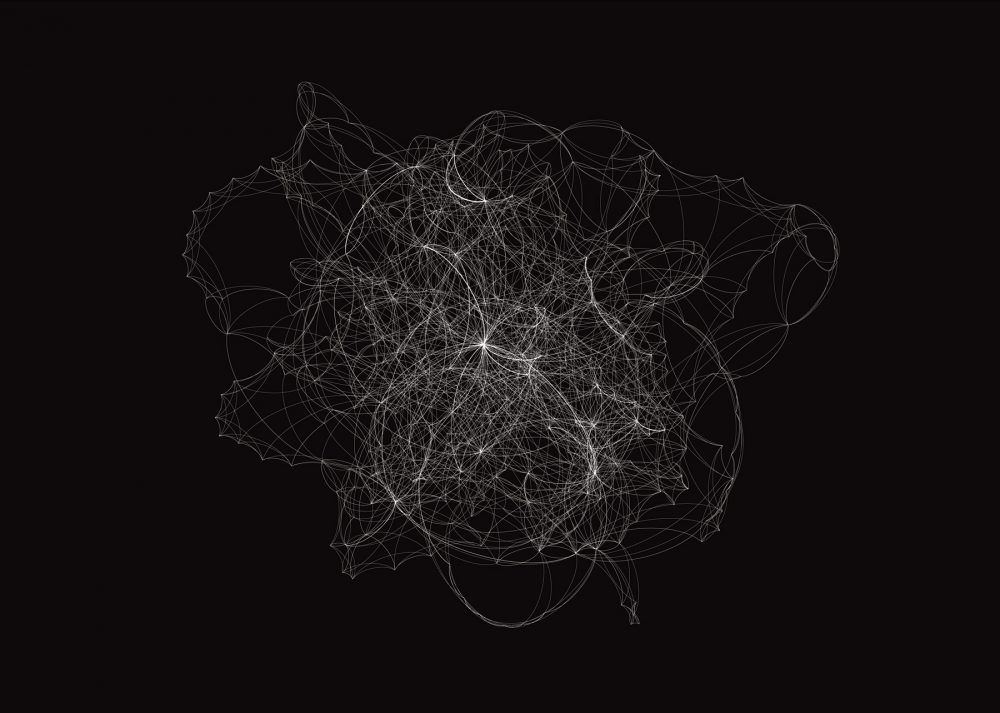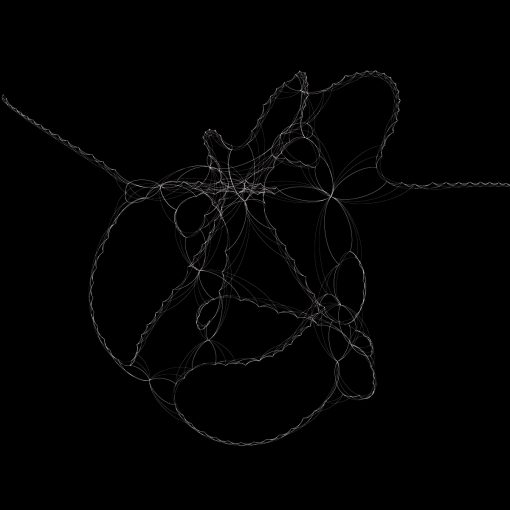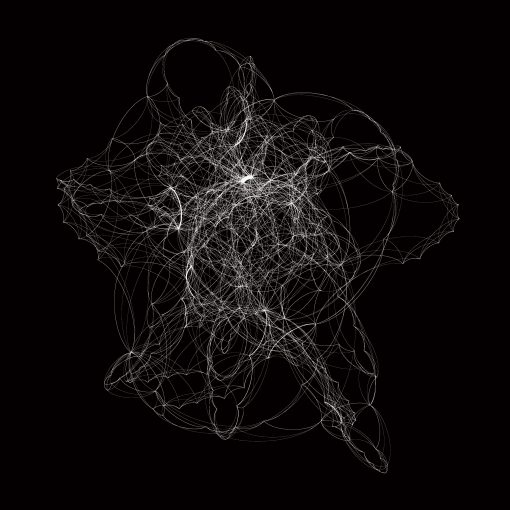Posted by Nodus Labs | April 20, 2019
Sculpting with Text: Abstract Text Network Visualization

The origin of the word “text” is from the Latin “texere”, “to weave”. When we write text, we are weaving together the different threads of meaning to produce a coherent whole. Network analysis allows us to see patterns in this totality, to see both the whole woven garment and the (meaning) threads within.
The process of writing itself is rarely purely chronological. We might have impressions, fragmented ideas, excerpts and notes. Then we put them together, making sure they adhere to the rules of grammar, to logic, or to our poetic sense, whatever it may be.
When the text is being read, even if it is chronological, often it’s the impression that matters most. As human perception is primarily pattern-based, our impression will also depend on the patterns present within a text and the relations between them. Therefore, visualizing the patterns within a text is another way to get to the meaning present within.
…
In this live interactive installation the audience is invited to enter the space and to say something into the microphone. What they say is recognized as a text and converted into a network, following text network analysis algorithm, visualizing it on a graph, which is projected on the wall. The more people say into the microphone, the more they can see how they weave together a common entity, which consists of the traces of meaning that they collectively create.
…
It can also be argued that meaning itself is a relational phenomena. A zero on its own means nothing. When it is juxtaposed to the void of non~sense, however, some information can already be transferred: nothing for the void, zero for something. Yes/no, binary aspect of meaning. As we get more and more symbols are our disposal, we can encode more and more information into the different combinations between them. Shannon’s entropy, which measures the degree of disorder, will increase with the number of possible combinations between the elements, so will the amount of information that we can transfer using these elements.

A poem of Byron visualized as a graph. Poetry tends to have a more dispersed network structure.
In this context network visualization becomes a very useful tool for recording, representing, and analyzing these relations. While it is intuitively understandable, it also provides concrete mathematical tools from the graph theory, which can be used to rank different elements within the complexity, discover the elements that play an important role in the transfer of information that this network contains.
Moreover, abstract visualization of text also provides an aesthetic sense of how information is actually being encoded and decoded by our perception. Every time we say something, we present a pattern, that’s floating in the air, until it is perceived and interpreted by somebody else against their own backdrop of text-woven-network of meaning, making sense, reconfiguring the original narrative, sending it back into space.

The first chapter of the War and Peace by Leo Tolstoy. Coherent narratives tend to be more interconnected.

